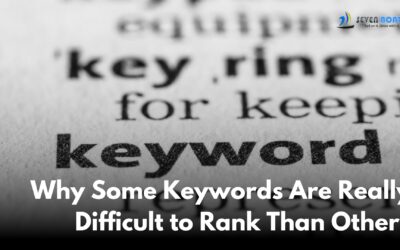In the world of digital content, the question of “ideal length” isn’t as simple as tossing out a number. It’s about strategy, audience behavior, and platform-specific trends. To get it right, you need to understand what works for your niche, where your content is being published, and how your readers engage with it. In this blog, we’ll break down the various factors influencing content length, using data, practical examples, and insights.
The Science Behind Content Length
The ideal content length varies significantly depending on the type of content and its purpose. Research suggests that longer articles tend to perform better in terms of Search Engine Optimization. For example, studies by platforms like HubSpot and SEMrush have shown that posts with 2,000 words or more are more likely to rank higher on search engines. This happens because longer content usually provides in-depth insights, includes natural keyword variations, and gets more backlinks. However, this doesn’t mean every piece of content should aim for that number. Some audiences prefer shorter, to-the-point content, especially when they’re seeking quick answers.
Length also affects how long users stay on your page. A longer article with engaging, well-structured writing can keep readers on your site longer, signaling to search engines that your content is valuable. But be wary—unnecessarily long articles can push readers away, particularly if they feel like you’re rambling. Quality, therefore, is the real game-changer.
Tailoring Length to Your Platform
Every platform has its sweet spot when it comes to content length. Blog posts typically thrive in the 1,000–2,500 word range, but platforms like LinkedIn favor shorter posts, often between 500–1,000 words. Instagram captions, on the other hand, perform best when kept concise—though storytelling posts can stretch to 300 words if done well. On platforms like Twitter (now X), brevity is non-negotiable with the character limit, but threads allow for more detailed discussions.
The same principle applies to other types of content. For instance, YouTube videos generally perform best when they’re between 7–15 minutes, catering to viewers’ attention spans and YouTube’s algorithms. Podcasts, by contrast, often range from 20–60 minutes, depending on the niche. Matching your content length to your platform is essential to ensure you’re meeting your audience where they are.
Understanding Your Audience’s Intent
Your audience’s intent is a critical factor when determining the right content length. For example, a user searching for “how to boil an egg” isn’t looking for a 2,000-word deep dive into the science of boiling water. They want quick, actionable steps. In contrast, someone searching for “best strategies for content marketing in 2024” is likely seeking comprehensive insights, examples, and case studies.
Understanding user intent means identifying whether your audience is seeking information (informational intent), trying to decide between options (comparative intent), or ready to take action (transactional intent). Informational content often benefits from longer formats that cover a topic thoroughly, while transactional content should be direct and concise.
Niche-Specific Variations
Different industries and niches demand different content lengths. For example, technical blogs about programming or scientific research might require longer articles to explain complex ideas thoroughly. Meanwhile, lifestyle blogs often get away with shorter, visually appealing posts, as readers in this niche often skim for inspiration or ideas.
E-commerce content is another unique category. Product descriptions should be concise, but category pages often benefit from 300–500 words of well-optimized content. For reviews and buyer’s guides, longer formats (1,500–3,000 words) often perform better because they provide detailed insights that help consumers make informed decisions.
Balancing Depth and Readability
Length isn’t just about word count—it’s about depth and readability. A 3,000-word article that repeats itself will lose readers, while a well-crafted 1,500-word article that gets straight to the point will keep them engaged. To strike this balance, focus on structure. Use subheadings, bullet points, and concise paragraphs to break up text. Incorporating visuals like images, videos, or infographics can also make longer content easier to digest.
Another consideration is sentence structure and language. Avoid overly complex sentences or jargon that alienates readers. Instead, write conversationally and prioritize clarity. Even in longer content, your readers should feel like they’re being guided, not bogged down.
The Role of Analytics
Analytics tools like Google Analytics, Hotjar, or SEMrush are invaluable when fine-tuning content length. Look at metrics like average time on page, bounce rates, and scroll depth to understand how users are engaging with your content. If readers are leaving halfway through a 2,000-word post, you might need to make it more concise or improve your introductions.
Testing different lengths can also provide insights. For example, publish a short version of a blog alongside a longer, in-depth version and see which performs better. Over time, patterns will emerge, giving you a clearer idea of what works for your audience.
The Changing Landscape of Content Length
Trends in content length have evolved over the years. In the early 2010s, short, keyword-stuffed articles were common because they worked well for search engines. As algorithms have grown smarter, the focus has shifted to high-quality, user-focused content. In the 2020s, long-form content has become king, but it’s not just about length—it’s about delivering value.
Microcontent has also gained traction, especially on social media platforms. Bite-sized content like Instagram stories, TikTok videos, and Twitter threads can complement your longer content by driving engagement and funneling traffic to your website or blog.
When Shorter Content Is Better
Not all content needs to be long. Shorter pieces are ideal for FAQs, news updates, or announcements. They’re also perfect for audiences with limited attention spans, such as those scrolling through social media during their lunch break. When time is of the essence, prioritize clarity and brevity over word count.
Shorter content can also serve as a gateway to longer pieces. For example, a short blog post summarizing a topic can include links to more detailed guides, encouraging users to explore further if they’re interested.
Conclusion: Quality Over Quantity
While there’s no one-size-fits-all answer to the question of ideal content length, the key takeaway is that quality matters more than quantity. A well-researched, engaging article of 1,500 words will always outperform a fluffy 3,000-word piece. Tailor your content length to your audience, platform, and niche, and use analytics to refine your approach. Above all, prioritize delivering value—because in the end, that’s what keeps readers coming back.








This blog post effectively argues that content length should be determined by several factors, not just a fixed word count. It correctly emphasizes the importance of audience intent, platform, niche, and overall quality. The conclusion, “Quality Over Quantity,” is a strong takeaway. However, while the post mentions analytics, it could benefit from more concrete examples of how specific metrics (like bounce rate or time on page) can inform content length decisions.